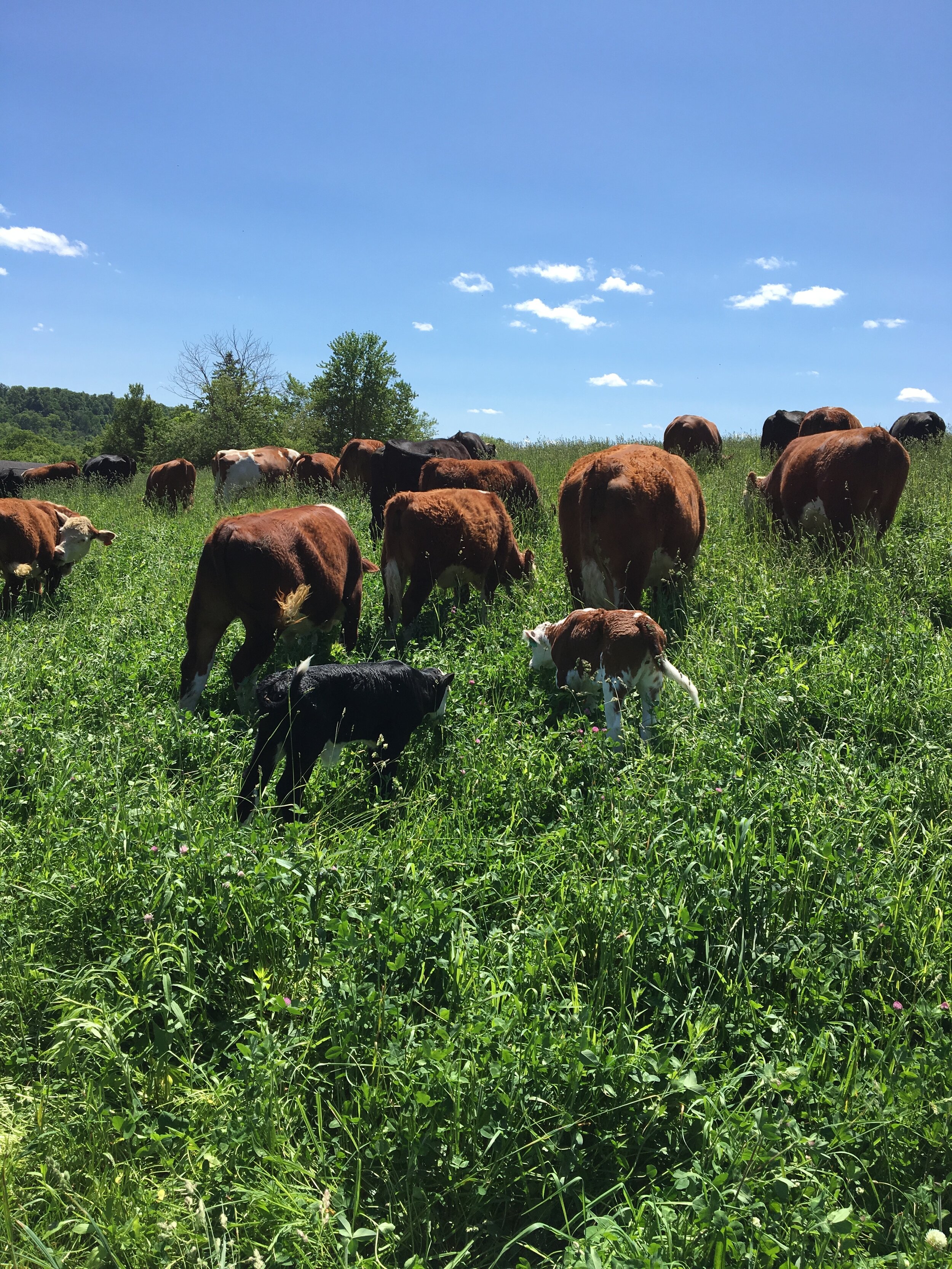Flooded: How grassfed beef can save oyster farmers.
Flooded: How grassfed beef can save oyster farmers.
The New Food Economy recently featured a story focusing on the plight of Gulf Coast oyster farmers who are suffering from a deluge of fresh water. As New Orleans continues to be tormented by the excessively swollen Mississippi River, spillways designed to redirect the flow are being called into action.
Over ten trillion gallons of water flowed through the Bonnet Carre Spillway during the summer of 2019, and each of those intruding units of river water freshened the brackish ecosystem that exists in the Mississippi Sound, resulting in massive die-offs of blue crabs, shrimp, and oysters. The floods are becoming more frequent, which prohibits salinity levels from stabilizing before absorbing another freshwater blow. Few are hopeful that they will cease. The new reality has potential to radically alter natural life on the Gulf Coast.
Floods are an epidemic, nationally and locally. Last year in Clarion, for example, heavy rains caused catastrophic damage to towns within our region. On a national level, numerous cities broadcast footage of rescue boats scouring submersed streets in search of stranded people. We’re focused on watery destruction, and solutions promise to be costly.
In the midst of such saturated coverage, to suggest drought is threatening our food supply sounds sufficiently ridiculous. Yet drought is plaguing farmers year after year. Flooding that’s killing the oysters and drought that’s parching crops are linked. We have to examine soil to understand the connection.
Exposed soil is vulnerable to water. Raindrops pummel the ground directly, effectively pounding the soil until it becomes capped. Capped soil, upon the next precipitation event, acts more like a paved parking lot than it does soil: water runs off into the ditch, then into the stream, then into the river. Huge volumes of water sluicing off of surrounding properties concentrate in and subsequently overwhelm tributaries. Flooding is a result.
Whatever water does remain on the barren land is quickly lost to evaporation because organic material (decaying plants) no longer exists in sufficient quantities to hold moisture. Drought is a result.
Conversely, soil protected by a thick layer of permanent vegetation enjoys a far different rainfall experience. Falling drops of water are shattered and slowed by the leaves and stems standing above the ground. Even in heavy rains, water seeps to the ground rather than hammering it. Roots, stems, and organic material hold water in place. When the rains stop, soil is shaded by standing plants, dramatically reducing evaporation. Surplus water trickles into tributaries instead of flooding them. This is nature’s template for a healthy water cycle.
It’s impossible to deny that orthodox agricultural practices are largely to blame for the scenario playing out on the Gulf Coast. America’s agriculture paradigm is grain-obsessed. Grain production mandates exposed soil, and exposed soil causes downstream flooding that we watch on the news.
We have to change the paradigm.
Farmers engage in business as users of water, which is wholly incorrect. We need to be collectors of water, deliberately capturing and storing the precious resource. I think of myself as a landscape hydrator.
Every 1% increase in soil organic material enables each acre to hold 20,000 additional gallons of water. If 10 farmers in Clarion replaced 100 acres of cropland with grassland, then deliberately increased soil organic material by just 1% (which is a paltry addition), their combined acreage would retain 20 million additional gallons of water. Consider the scope of this reality if it were applied to the nation.
It’s tough, though, to convince a farmer to fully overhaul production methods if he has no reason to depart from what’s familiar, even if the familiar is destructive. Incentive is necessary.
The best way to incentivize a shift in agricultural methods is to change what we eat. What consumer demand dictates, production will provide. Consumers must seek food that favors water-saving perennial landscapes if we wish to solve problems like the oyster disaster on the coast.
Grassland is a perennial landscape. People can’t digest grass, but cattle can, and our carnivorous makeup enables people to consume meat and milk from cattle (not to mention that from sheep, goats, and other animals). If a majority of Americans adopted a diet that favored grassfed meats over soybeans and corn syrup, then demand would completely change the trajectory of agriculture by replacing cornfields with higher-value pasture.
Makes a plant burger look a little foolish, does it not?
On the Gulf Coast, legislators are looking for more tax funding to control flooding. Oyster farmers are looking for tax funding to cover their losses caused by the flooding. Both requests add an enormous burden to the national budget situation, and neither fix the problem, for the rains will run off our landscape again next year.
A permanent solution is to stop the flooding instead of attempting to control it. The best way to take control of the flooding is to find a farmer who understands healthy water cycles and partner with the family by purchasing food directly from them.
Healthy agriculture is wanting for funding, and the most direct route to capitalize the mission is to do it yourself instead of hoping legislation will do it for you. Each citizen carries with them an ability to make a real difference by accepting responsibility through what they purchase. If healthy farming methods are incentivized by the population, unhealthy farming methods won’t survive even with the best government support.
There is power in the food you eat. Choose wisely.
The oyster farmers are counting on it.

